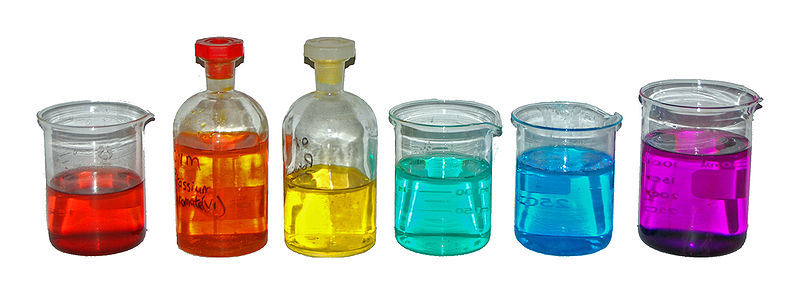*Please note that all chemical formulae must be type in the exact capital letter and small letter on the calculator itself "NOT ON THE PERIODIC TABLE".
For example: CO2, H2O, H2SO4......
This is a powerful chemistry scientific calculator that are able to calculate complex relative atomic mass (RAM), relative molecular mass (RMM).
mei, Tuesday, May 5, 2009Periodic Group Properties
mei, Saturday, May 2, 2009
With potassium as an example:
2K (s) + 2H2O (l) → 2KOH (aq) + H2 (g)
*Group 2 = Alkaline Earth Metals. React more mildly with oxygen to produce oxides of the metals and only react with water at temperatures where the water is steam.

* Groups 3-12 =Transition Metal groups. Periodic trends in the d-block are less prevailing than in the rest of the periodic table. Going across a period, the valence doesn't change, so the electron being added to an atom goes to the inner shell, not outer shell, strengthening the shield.
The (loosely defined) transition metals are the 40 chemical elements 21 to 30, 39 to 48, 71 to 80, and 103 to 112. The name transition comes from their position in the periodic table of elements. In each of the four periods in which they occur, these elements represent the successive addition of electrons to the d atomic orbitals of the atoms. In this way, the transition metals represent the transition between group 2 elements and group 13 elements.

*Group 17= Halogens. It is highly reactive, and as such can be harmful or lethal to biological organisms in sufficient quantities. This high reactivity is due to the atoms being one electron short of a full outer shell of eight electrons. They can gain this electron by reacting with atoms of other elements. Fluorine is one of the most reactive elements in existence, attacking otherwise inert materials such as glass, and forming compounds with the heavier noble gases. It is a corrosive and highly toxic gas. The reactivity of fluorine is such that if used or stored in laboratory glassware, it can react with glass in the presence of small amounts of water to form silicon tetrafluoride (SiF4). Thus fluorine must be handled with substances such as Teflon (which is itself made of fluorine), extremely dry glass, or metals such as copper or steel which form a protective layer of fluoride on their surface.
2 F2(g) + 2 H2O(l) → O2(g) + 4 HF(aq)

*Group 18= The properties of the noble gases can be well explained by modern theories of atomic structure: their outer shell of valence electrons is considered to be "full", giving them little tendency to participate in chemical reactions, and only a few hundred noble gas compounds have been prepared. The melting and boiling points for each noble gas are close together, differing by less than 10 °C (18 °F); consequently, they are liquids only over a small temperature range.
Relative Molacular Mass
mei, Thursday, April 2, 2009The molecular mass of a substance is the mass of one molecule of that substance, relative to the unified atomic mass unit (equal to 1/12 the mass of one isotope of carbon-12). This is distinct from the relative molecular mass of a molecule, which is the ratio of the mass of that molecule to 1/12 of the mass of carbon 12 and is a dimensionless number.
Molecular mass differs from more common measurements of the mass of chemicals, such as molar mass, by taking into account the isotopic composition of a molecule rather than the average isotopic distribution of many molecules. As a result molecular mass is a more precise number than molar mass; however it is more accurate to use molar mass on bulk samples. This means that molar mass is appropriate most of the time except when dealing with single molecules.


